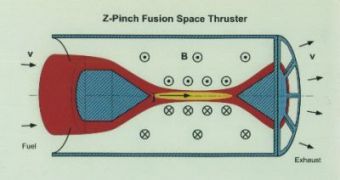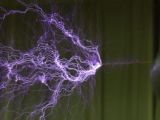Fusion is the nuclear process by which two light atoms, such as hydrogen, get merged together into a heavier atom. The energy corresponding to the mass of the resulting heavier atom is smaller than the initial energy of the two separated atoms. So, due to the conservation of energy, fusion has to be accompanied by a large release of energy. We are witnessing this kind of release of energy each day as the Earth is warmed by the Sun.
Scientists have created their own temporary suns. They are called H-bombs. But now they would like to produce the reaction in a more controlled manner so the resulting energy could be used for our needs. The promise of the controlled fusion reaction is that we would get from one liter of water (from the hydrogen in water) about ten thousand times more energy than we are now getting from one liter of petrol (maybe even more). Such a fusion factory would also be quite clean. The only problem they would cause is the huge release of energy itself. The issue would be how to use or get rid of all that energy so we won't cause even more global warming.
But in order for such a fusion factory to be built the fusion reaction has to be controlled. The idea is to produce the fusion inside a plasma (an ionized gas) which could be controlled magnetically (because the ions are electrically charged).
A popular way of controlling the plasma is called the z-pinch effect. The z-pinch effect is the result of the way electric and magnetic fields get created by one another. If one has a changing magnetic field (for example one moves a magnet) this produces an electric current. The electric current might be made of electrons moving in a wire, but can also be ions of plasma set in motion. In turn, the electric current produces a magnetic field in the opposite direction of the original magnetic field. Thus, this will tend to push the magnet away. But if one prevents the magnet from being pushed back, the moving charges in the plasma get squished together. This squishing effect is called z-pinch.
Since the 1980s physicists have been using tungsten wires wrapped around the fuel instead of magnets. When very high intensity current (millions of amps) is passed through the wire it vaporizes. The magnetic field produced by this plasma causes the z-pinch.
The project is to use the z-pinch effect to fuse the atoms together. But in order to get a better idea how to control the reaction one has to know more precisely what happens to the plasma as it implodes. In particular one has to determine the various causes of inefficiency when the electric energy is used to create the implosion.
Vladimir Ivanov from the Nevada Terawatt Facility (NTF) at the University of Nevada, Reno has now found a new way of probing what happens. "With our 1 million amp NTF Z-pinch, we can explore some very interesting physics that can be applied to the bigger pinches at the national laboratories," said Ivanov.
"This is the fundamental stuff, the physics if you will, that is limiting the transfer of the electrical energy into the implosion energy which is responsible for the heating and x-ray production that will eventually lead to a fusion energy reaction in a laboratory," says Tom Cowan, director of the NTF.
Ivanov had previously worked on the interaction between lasers and plasma and realized a way to put his old experience to new use. Because the lasers have a very high frequency they can be used to probe what happens in the plasma at a much higher resolution than previously imagined. While the standard z-pinch experiments work at a frequency of one pulse each 100 nanoseconds, the typical laser plasmas can even reach a thousandth of a nanosecond. Images that previously looked blurry and lacking contrast now clearly revealed the "bubbles" appearing in the plasma and "fingers" left behind the implosion. These images expose the sources of the inefficiencies.
"With these trailing fingers of mass, some of the current is left behind," Cowan says. "The current drives the implosion process, so these inefficiencies are very important. The sequence of these little failure modes, these little fuse effects happening on the wires, is what is limiting the big experiments. By understanding this better, we can come up with new ways at looking at how the current flows into the plasma, and how the mass interacts."
"This is one of these absolutely beautiful examples where Vladimir, his students and his team have developed brand new ways to measure the fundamental processes such as the current flow and the mass flow when plasma bubbles accelerate to implode and heat a plasma," added Cowan.

 14 DAY TRIAL //
14 DAY TRIAL // 
